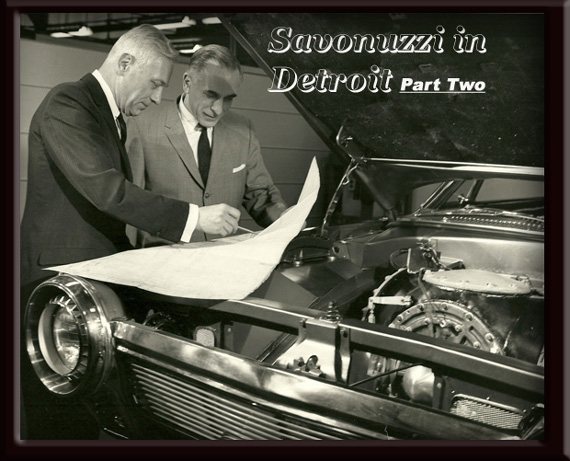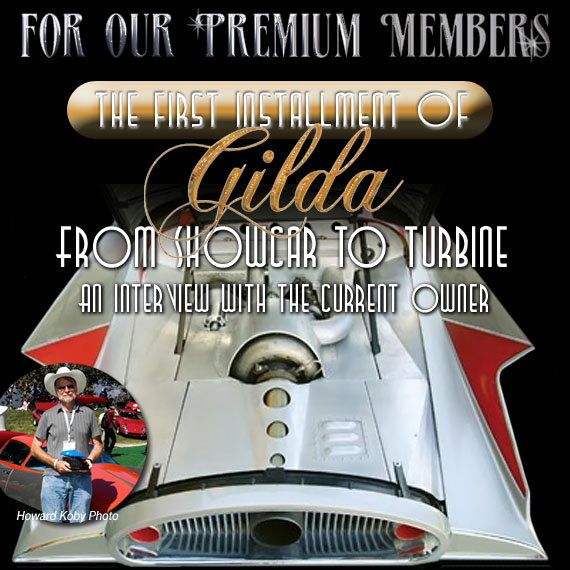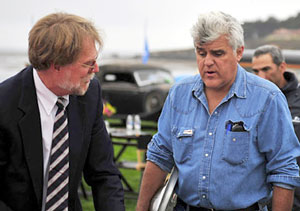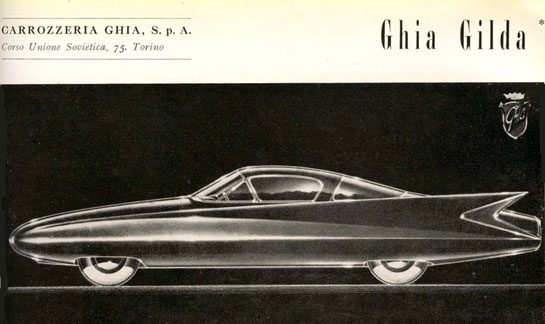By Robert Pauley
For 25 years Robert Pauley worked as a design engineer for Chrysler’s Research Department and spent many years on the gas turbine program. What follows are some remembrances of the time he spent on the Chrysler turbine program with the Italian engineer and designer Giovanni Savonuzzi. Part 1 describes meeting Savonuzzi at Chrysler and the circumstances surrounding Savonuzzi’s position and his idea for a gas turbine-powered Indy car. In the lead image above, Savonuzzi poses with George Huebner along with the Chrysler Turbine Car.
Designing the Chrysler Turbine Powered Indy Car
Savonuzzi had collected some Indy car drawings and an Indianapolis 500 rule book and I began making a large, roll-size layout drawing of the proposed race car. The drawing had no part number but was dated July 31, 1963. That concept drawing, now lost,* showed the car in three views, side, top and front, at one-quarter scale. The cockpit was located slightly forward of the midpoint with two Chrysler A-831 gas turbine engines behind the driver. Large air intake scoops were located on each side of the driver’s headrest feeding air into dual plenums, one for each engine. The internal engine components were to be production parts but the four regenerators were to be eliminated. That change required redesigned “regenerator covers” to separate the compressor air from the exhaust gasses. Four rectangular exhaust ducts passed upwards through the engines’ top cowling with the outlets facing aft. The two engines were mounted side-by-side and aligned fore-and-aft with the output flanges bolted to a transverse housing that incorporated a transmission and the final drive to the rear wheels. The car had a long, pointy nose somewhat similar to that of the Lotus 58 that raced at Indy in 1968. The nose of the Chrysler proposal, however, was broader, flatter and not as long. Savonuzzi said he wanted it shaped that way for aerodynamic reasons. In one corner of my layout I had included a perspective drawing of the proposed race car and as a final touch had drawn a large Chrysler Pentastar logo on the flat surface of the nose. Savonuzzi became quite excited as the design evolved on my drawing board over a period of several weeks. He exuded optimism and appeared confident that with the aid of my drawing he would be able to sell the proposal to Chrysler management.



